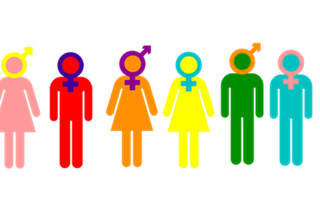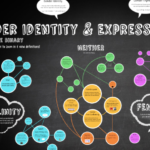Redefining Gender: Understanding the Complexities Beyond the Binary
Introduction
Gender has traditionally been understood as a binary concept, with individuals categorized strictly as male or female. However, this simplistic view fails to capture the true diversity of human experience. As society evolves, it’s essential to redefine gender in a way that acknowledges the complexities beyond the binary. This article explores these complexities and the importance of embracing a more inclusive understanding of gender.
Moving Beyond the Binary
The Traditional Binary Model
Historically, gender has been seen as binary:
- Male and Female: The binary model divides people into two categories based on their biological sex.
- Cultural Norms: This model has shaped societal expectations, roles, and behaviors, often limiting individuals to strict definitions of masculinity and femininity.
Example: Gender Roles in Society
In many cultures, men have traditionally been expected to be strong and stoic, while women were seen as nurturing and emotional. These roles have defined how individuals are expected to behave, often leading to the suppression of personal identities that do not fit these molds.
The Emergence of a Spectrum
In recent years, there has been a growing recognition that gender is not limited to male or female:
- Gender Spectrum: Gender is increasingly understood as a spectrum, where individuals can identify anywhere along a continuum, or outside of it entirely.
- Fluidity and Diversity: People may identify as non-binary, genderqueer, or gender-fluid, rejecting the idea that gender is fixed or binary.
Example: Non-Binary Identity
Non-binary individuals do not exclusively identify as male or female. Instead, they may feel their gender exists somewhere in between, beyond, or even outside the traditional categories altogether.
Understanding the Complexities of Gender Identity
Gender Identity vs. Biological Sex
It’s important to distinguish between gender identity and biological sex:
- Biological Sex: Refers to the physical attributes, such as chromosomes, hormones, and reproductive organs, that classify someone as male or female at birth.
- Gender Identity: Is a deeply personal sense of one’s gender, which may or may not align with biological sex.
Example: Transgender Identity
A transgender person’s gender identity differs from their assigned biological sex. For instance, someone assigned female at birth might identify as male, and vice versa.
Intersectionality and Gender
Gender identity is further complicated by the concept of intersectionality:
- Intersectionality: This refers to how different aspects of a person’s identity (e.g., race, class, sexuality) intersect and influence their experience of gender.
- Unique Experiences: Two people with the same gender identity might have very different experiences of gender depending on other aspects of their identity.
Example: Race and Gender
A Black transgender woman may face different challenges than a white transgender woman, as her experience is shaped by both her race and gender.
Embracing a More Inclusive Understanding of Gender
The Importance of Recognition
Recognizing the diversity of gender identities is crucial for fostering an inclusive society:
- Validation and Respect: When individuals are allowed to express their true gender identity, they feel validated and respected.
- Reducing Discrimination: Understanding and acceptance of diverse gender identities can help reduce stigma and discrimination.
Example: Inclusive Language
Using inclusive language, such as respecting chosen pronouns and using gender-neutral terms, helps create an environment where everyone feels acknowledged and valued.
Legal and Social Support
Supportive legal and social frameworks are essential for protecting diverse gender identities:
- Legal Protections: Laws that recognize non-binary and transgender identities can protect individuals from discrimination in various areas of life, such as employment, healthcare, and education.
- Social Acceptance: Beyond legal measures, society must continue to shift toward greater acceptance of all gender identities.
Example: Legal Recognition of Non-Binary Identities
Some countries and states have introduced options for non-binary gender markers on official documents, acknowledging the existence of identities beyond the binary.
Conclusion
Redefining gender to include the complexities beyond the binary is a crucial step toward creating a more inclusive and understanding society. As we move away from rigid, traditional views of gender, we open the door to greater acceptance and respect for all individuals, regardless of how they identify. By embracing the full spectrum of gender identities, society can become a place where everyone is free to express their true selves without fear of discrimination or exclusion.



